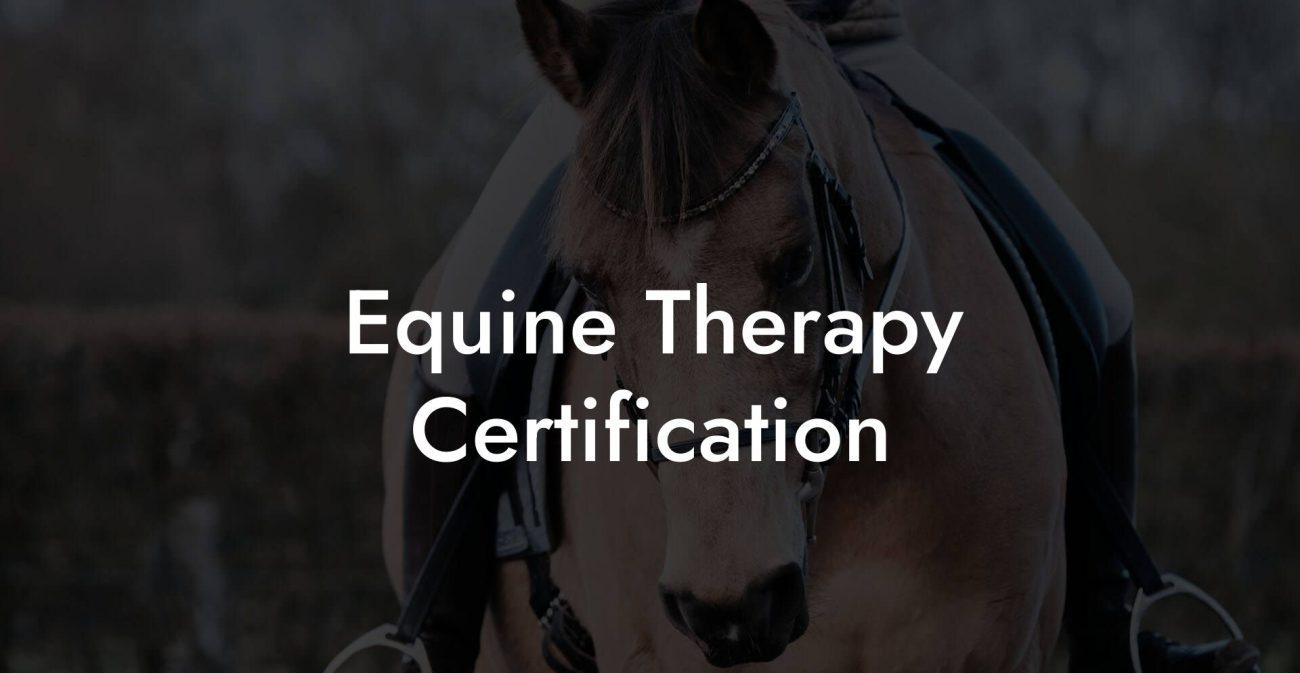Ever wondered how your majestic four-legged friend picks up whispers of the wind and secret sounds of the paddock? The marvel of equine hearing is far more fascinating than you might imagine. With ears that swivel like trendy TikTok cams and a sensitivity that can pick up frequencies a human would never even dream of, horses are true connoisseurs of sound. Let’s dive into the quirky and captivating world of a horse’s hearing frequency range and discover why tuning in to those auditory signals is not just a cool party trick, it’s essential for your horse care arsenal.
Quick Links to Useful Sections
- Understanding Equine Auditory Capabilities: How Horses Hear
- Decoding the Frequency Range: What Can Horses Hear?
- How Horse Hearing Differs from Human Hearing: Myth vs. Fact
- The Science Behind the Sound: Anatomy of Equine Ears
- Practical Implications for Horse Care: Why Horse Hearing Matters
- Common Challenges and How to Address Them
- Integrating Technology and Modern Solutions for Monitoring Horse Hearing
- Holistic Approaches in Equine Care: Listening to Your Horse
- Case Studies: Real World Examples Impacting Horse Hearing and Care
- Case Study 1: The Skittish Stallion
- Case Study 2: The Aging Mare’s New Tune
- Case Study 3: Harmonizing the Herd
- Tips and Tricks: Enhancing Your Horse's Auditory Environment
- Resources and Community Support: Your Next Steps
- Integrating Equine Hearing Into Your Daily Routine
- Equine Hearing FAQs: Your Questions Answered
- Your Journey to Elevated Equine Care: Tuning In
Understanding Equine Auditory Capabilities: How Horses Hear
When it comes to hearing, horses are like the ultimate audiophiles of the animal kingdom. Their ears aren’t just ornamental; they’re finely tuned instruments that serve multiple purposes. Unlike humans, whose ear canals are rather fixed, horses possess highly mobile ears that can rotate up to 180 degrees. This nifty adaptation allows them to scan their environment effortlessly, ensuring they catch even the most elusive sounds.
In the equine world, auditory perception isn’t just about picking up noise. It plays a pivotal role in communication, predator detection, and even social interactions. Whether it’s a distant rustle in the grass or the subtle nuance in a herd mate’s call, a horse’s hearing is indispensable, making it one of their most vital senses.
With a hearing range that often surpasses that of humans, horses can detect sounds in both lower and higher frequencies. Understanding these capabilities not only deepens our appreciation for their natural talents but also guides us in creating an optimal auditory environment for our equine companions.
Decoding the Frequency Range: What Can Horses Hear?
Let’s break it down: when we talk about frequency, we’re referring to the number of vibrations per second, measured in hertz (Hz). While humans typically hear between 20 Hz and 20,000 Hz, horses have a slightly different sweet spot. Research indicates that horses can hear sounds ranging from as low as 55 Hz to as high as 33,500 Hz. Yes, you read that right, 33,500 Hz!
This impressive range means horses are not only attuned to deep, rumbling bass notes but also to the high-pitched frequencies that we might miss altogether. For instance, the trill of a bird or the subtle squeak of a gate may be imperceptible to you but can resonate with startling clarity in your horse’s world.
Moreover, this frequency range isn’t just an arbitrary number. It reflects evolutionary adaptations instilled by nature over millennia, helping horses detect environmental cues that are crucial for survival. Understanding this frequency range is key to deciphering how horses interact with their surroundings and how slight disruptions in their auditory environment can impact their behavior.
How Horse Hearing Differs from Human Hearing: Myth vs. Fact
There’s a common misconception floating around that horses are just big, dumb animals with a one-trick sense, “Hey, they can only whinny and neigh!” While it’s true they communicate vocally, their auditory system is a far cry from being simplistic. In fact, horses excel in aspects of hearing that often leave humans in the dust.
Myth: Horses only react to loud sounds and are oblivious to subtle noises.
Fact: Horses have finely tuned auditory acuity, capturing minute environmental details that often go unnoticed. Their ears act like directional radars, zeroing in on any potential threat or communication cue.
Myth: A horse’s hearing range is similar to that of humans.
Fact: With capabilities reaching into high frequencies of up to 33,500 Hz, horses can detect sounds that we can’t even begin to process. This doesn’t just mean they’re hearing better; it means that their world is sonically richer and, in many ways, more complex.
Understanding these differences isn’t just an academic exercise, it’s a critical component of effective horse care. Knowing that your horse picks up sounds outside your auditory window can explain certain behaviors, such as sudden skittishness, and help you create a calmer, more controlled environment.
The Science Behind the Sound: Anatomy of Equine Ears
Let’s get technical for a minute (but don’t worry, we’ll keep it fun). A horse’s ear is a marvel of biological engineering, designed for both functionality and finesse. Structurally, their ears comprise three main parts: the outer ear, the middle ear, and the inner ear.
The Outer Ear: This is the visible, funnel-shaped structure known as the pinna. Not only does it capture sound waves, but its movable nature allows the ear to pivot towards the source of a sound, much like a satellite dish aiming for clarity.
The Middle Ear: Nestled between the outer and inner ear, this section houses tiny bones called ossicles (the malleus, incus, and stapes) that vibrate in response to sound waves. These vibrations are then transferred to the inner ear.
The Inner Ear: This complex structure contains the cochlea, where sound frequencies are decoded. The cochlea’s spiral shape and delicate hair cells convert vibrations into electrical signals that are sent to the brain, ultimately creating the sounds your horse perceives.
The elegance of this system cannot be overstated. The interplay between these anatomical components not only gives horses their impressive hearing range but also underpins their instincts and reactions to the world around them.
Practical Implications for Horse Care: Why Horse Hearing Matters
If you’re a horse owner, understanding your equine friend’s auditory capabilities isn’t just academic, it has real-world applications. A horse’s environment, including the sounds that fill it, can significantly influence its behavior, stress levels, and overall well-being.
When your horse is exposed to a cacophony of sounds, from the rumble of nearby traffic to the high-pitched chatter of neighboring animals, it can become anxious or distracted. Recognizing and mitigating these auditory stressors creates a more harmonious setting for a happy, healthy horse.
Additionally, by being aware of the specific frequency range your horse is sensitive to, you can optimize communication and training techniques. For example, subtle auditory cues, such as a soft clicker sound or a gentle whistle within a frequency your horse can detect, might be far more effective than a loud, startling noise.
Conversely, ignorance about your horse’s auditory sensitivities can lead to misinterpretations of behavior. What might seem like a sudden startle or an inexplicable bout of skittishness could actually be a reaction to an imperceptible high-frequency noise that’s sending the equine brain into a mild panic. By fine-tuning the auditory environment with the knowledge of horse hearing frequency range, you can tailor a space that’s both soothing and conducive to learning.
Common Challenges and How to Address Them
Even the most finely tuned hearing system can face challenges. From environmental noise pollution to age-related decline, several factors can impair a horse’s auditory experience. One common issue is hypersensitivity, some horses become overly reactive to certain sounds.
If you notice that your horse is consistently on edge whenever certain noises occur, it might be a sign that the sounds within its detectable frequency range are overwhelming. Reducing background noise on the property, installing sound-dampening materials in barns, or simply scheduling quiet periods can help alleviate stress.
Another challenge is the impact of aging on equine hearing. As horses grow older, just like us, they can experience a natural decline in sensory perception. This might manifest as a decreased response to auditory cues or increased sensitivity to sudden noises. Regular check-ups with an equine veterinarian can help monitor these changes, and adjustments in training or communication methods can compensate for the decline.
Environmental factors, such as loud farm machinery or even the incessant hum of modern technology, can also disrupt the natural acoustic landscape of a horse’s habitat. In today’s fast-paced world, preserving the integrity of these auditory signals is more important than ever.
Addressing these challenges head-on through thoughtful modifications to the living environment and training routines is crucial. By recognizing and mitigating the factors that strain your horse’s hearing, you enhance not only its comfort but also its performance and overall quality of life.
Integrating Technology and Modern Solutions for Monitoring Horse Hearing
In our tech-driven era, it’s no surprise that modern innovations have made their way into the realm of equine care. Advanced devices and monitoring systems now allow horse owners to keep track of environmental noise levels and even assess the quality of a horse’s auditory environment.
From smartphone apps that measure decibel levels in your barn to specialized sound recorders that can analyze the frequency composition of background noise, technology is offering new ways to ensure your horse’s surroundings are optimized for its unique hearing range. These tools can help you identify potential disruptions before they escalate into behavioral issues.
Moreover, noise-cancellation systems, similar to those in high-end headphones, are slowly making their way into stables and paddocks, creating quiet zones where horses can retreat from a noisy environment. This blend of technology and traditional horse care practices promises a future where equine auditory health is monitored and managed with unprecedented precision.
Embracing these modern solutions reflects a larger trend in horse care: integrating tradition with innovation to provide the best possible life for your four-legged companion.
Holistic Approaches in Equine Care: Listening to Your Horse
Caring for a horse is much like tuning in to a secret radio frequency, you need to be attuned to both the obvious signals and the subtle cues that your horse sends out. Holistic equine care goes beyond meeting physical needs; it’s about nurturing the animal’s overall well-being, including its sensory experiences.
Incorporating mindfulness into your daily routines can make a world of difference in how you interpret your horse’s behavior. A quiet walk through the pasture, free from distractions, allows you to tune in to the natural rhythms of your horse’s world. Notice how the soft rustle of hay, the chirping of birds, or even the distant murmur of other animals stimulates your horse’s senses.
This holistic approach means considering everything from nutrition to stress management. A calm environment, low on disruptive noises and rich in natural sounds, contributes to a well-balanced sensory experience. In turn, your horse becomes more relaxed and responsive during training sessions, forging a deeper, more intuitive bond between you both.
Just like you wouldn’t blast your favorite playlist at full volume in a quiet café, it pays to be considerate of the noise levels around your horse. By prioritizing an environment that respects its sensitive hearing range, you’re actually laying the foundation for enhanced communication and mutual understanding.
Case Studies: Real World Examples Impacting Horse Hearing and Care
Let’s look at some real-life scenarios that illustrate how understanding and managing a horse’s hearing frequency range can transform everyday equine care.
Case Study 1: The Skittish Stallion
Meet Apollo, a young stallion with a propensity for leaping at the slightest noise. His owner, Jamie, noticed that Apollo seemed increasingly anxious during mornings when the farm machinery kicked into gear. After consulting with an equine behaviorist, Jamie learned that Apollo’s sensitive hearing was being overwhelmed by the low-frequency rumble of the equipment. Simple changes were implemented: machinery was moved to a less frequented area, and sound-absorbing panels were installed in the stall. The result? Apollo quickly transformed from a high-strung jump-and-run bundle into a calm, composed companion.
Case Study 2: The Aging Mare’s New Tune
Daisy, a seasoned mare approaching her twilight years, had gradually become less responsive to subtle auditory cues. Routine communication that once elicited a prompt response now went largely unnoticed. Concerned about the decline in her hearing, Daisy’s caretaker, Marcus, arranged for a thorough auditory assessment. The solution involved regular health check-ups alongside adjustments in her training regimen, focusing on more robust, clearer auditory signals. Over time, Daisy’s responsiveness improved, reaffirming the value of adapting care methods to match the evolving needs of your horse.
Case Study 3: Harmonizing the Herd
In a large equine facility, multiple horses were displaying signs of auditory stress, such as restlessness and reluctance to gather for feeding, because of overlapping noises from neighboring barns and constant background clamor. The facility management took a holistic approach by integrating state-of-the-art acoustic panels and scheduling quiet hours. In parallel, caretakers received training on interpreting subtle auditory cues from the horses. With these changes, the herd’s behavior shifted dramatically: stress levels dropped, and the animals became noticeably more cooperative during group activities.
These case studies highlight the significant impact that conscious management of a horse’s auditory environment can have on behavior, training outcomes, and overall well-being.
Tips and Tricks: Enhancing Your Horse's Auditory Environment
So, how can you practically harness the knowledge of equine hearing frequency range to better care for your horse? Here are some fun yet effective tips:
- Create a Calm Soundscape: Invest in sound-absorbing materials for your barn and stable areas. Natural materials like hay bales and acoustic panels can help dampen excessive noise.
- Utilize Soft Auditory Cues: Instead of yelling or using harsh whips, opt for softer cues like gentle claps or calibrated sound signals that fall within the optimal frequency range for horses.
- Establish Quiet Zones: Designate specific areas in your facility as quiet zones where horses can retreat to relax and recharge without excessive noise.
- Schedule Regular Downtime: Ensure your horse’s routine includes periods of silence. A peaceful environment is crucial for reducing stress and promoting healing.
- Monitor Sound Levels: Use modern decibel meters or mobile apps to track noise levels in your surroundings and adjust your setup accordingly.
- Engage with Your Horse: Spend time simply observing your horse’s behavioral reactions to sounds. Over time, you’ll become attuned to the subtle ways in which they communicate distress, excitement, or contentment through their responses.
By taking these steps, you not only improve your horse’s immediate environment but also strengthen the bond between you and your equine partner. After all, a happy, relaxed horse is more likely to be responsive, cooperative, and ready to learn.
Resources and Community Support: Your Next Steps
Being informed about horse hearing frequency range is just the start of an exciting journey toward enhanced equine care. Consider diving into online communities, forums, and local equine clubs where fellow enthusiasts share practical insights and innovative ideas about managing equine auditory wellness.
Look out for webinars, podcasts, and workshops tailored to equine auditory science and modern horse care, there’s a wealth of resources designed to keep you in tune with the latest research and real-world applications. Whether you’re a seasoned horse owner looking for new strategies or a Gen-Z equestrian eager to blend tradition with modern tech, these communities offer support, education, and inspiration.
Additionally, don’t hesitate to reach out to veterinary professionals and animal behaviorists who specialize in auditory health. They can provide personalized advice on maintaining an optimal sound environment for your horse, ensuring you stay ahead of any potential issues.
Remember, your proactive engagement paves the way for innovation in equine care. By sharing your experiences and learning from others, you contribute to a broader movement of compassionate stewardship for our magnificent equine companions.
Integrating Equine Hearing Into Your Daily Routine
Incorporating what you’ve learned about horse hearing frequency range into everyday practices can be both fun and transformative. Think of it as creating a daily remix that harmonizes science with care. Start by setting aside quiet moments in the morning and evening to observe your horse in a relaxed state. Listen in on the subtle sounds of nature, and notice how your horse responds when the environment shifts from loud to serene.
In training sessions, experiment with low-volume, high-frequency cues that align more closely with your horse’s sensitive hearing. This approach not only makes the training process more engaging but also helps to build a stronger, more intuitive connection between you two. Over time, your horse may even start to anticipate these gentle signals and respond with increased focus and calm.
It’s also worth integrating auditory enrichment into your horse’s day-to-day life. Consider playing soft ambient music or natural sounds, like forest rain or gentle streams, which, within the right frequency range, can have a soothing effect on your horse’s mood. This mindful approach to sound can help lower stress levels and create a more harmonious living environment.
Ultimately, the goal is for you and your horse to develop a unique, symbiotic relationship built on clear, understanding communication. By paying attention to the hidden world of frequencies, you unlock another layer of connectivity that enriches daily interactions and elevates the overall quality of life.
Equine Hearing FAQs: Your Questions Answered
Here are some frequently asked questions exploring the depths of horse hearing frequency range and its significance in overall equine care:
1. What is the frequency range of a horse’s hearing?
Horses can typically hear sounds between 55 Hz and 33,500 Hz, allowing them to pick up both low bass vibrations and high-pitched frequencies that are beyond human perception.
2. How does a horse’s hearing ability benefit its survival?
A horse’s acute hearing helps it detect potential threats and communicate effectively with other herd members, ensuring timely responses to environmental changes and predatory signals.
3. Can environmental noise affect my horse’s behavior?
Yes, excessive or sudden noises can stress out horses, leading to behavioral issues. Creating a sound-friendly environment can help reduce anxiety and improve overall behavior.
4. How can I monitor the sound levels in my horse’s environment?
Modern technology such as smartphone decibel meter apps and specialized sound recorders can help you keep track of the noise levels, ensuring a balanced auditory setting for your horse.
5. What are some simple ways to reduce harmful noise in a stable?
Consider installing sound-absorbing materials, designating quiet zones, and scheduling downtime without machinery or unnecessary human activity. Adjusting training routines with gentle auditory cues can also make a big difference.
6. Are there specialized products for enhancing equine auditory health?
While research in equine auditory technology is still growing, products such as acoustic panels, noise-controlled fencing, and modern monitoring devices are being developed specifically for improving equine environments.
7. Can changes in the auditory environment improve training outcomes?
Absolutely. A calm, optimized sound environment can reduce distractions, lower stress levels, and enhance your horse’s focus during training sessions.
8. How often should one evaluate the auditory environment on a horse farm?
Regular evaluations, seasonally or when major changes are made, ensure the environment remains conducive to your horse’s well-being.
9. Do different horse breeds have varying auditory capabilities?
While the overall structure is similar across breeds, individual variations do exist. Genetics, age, and environmental factors can all influence a horse’s hearing sensitivity.
10. Can a horse’s behavior indicate hearing problems?
Yes. Unusual responses to auditory cues, sudden skittishness, or reduced reaction times may suggest potential hearing issues. Consulting with an equine veterinarian can provide clarity and guidance.
Your Journey to Elevated Equine Care: Tuning In
Embracing the marvel of your horse’s auditory abilities opens up a whole new realm of possibilities in care, training, and communication. When you start viewing the world through the lens of equine hearing frequency range, every sound becomes a story, every noise a signal, reminding you that even in the chaos of our modern lives, there exists an intricate balance of nature that can be tuned in to with precision and purpose.
Integrating this knowledge into your daily routine fosters a deeper, more empathetic connection with your horse. It encourages you to create spaces that are not only physically safe and comfortable but also acoustically harmonious. As you venture further into this fascinating domain, you may find that the simple act of listening, really listening, can transform your approach to horse care.
Whether it’s implementing innovative technologies, modifying your environment to reduce stress, or simply taking a moment to appreciate the subtle sounds of nature, every step you take brings you closer to a balanced, mindful, and enriched equine lifestyle. So, gear up, tune in, and let the symphony of equine care guide you, because your horse deserves nothing less than a world where every whisper of sound contributes to its well-being.
Your journey to elevated equine care starts with a single note. Embrace the fascinating world of horse hearing frequency range, and let every moment be a reminder of the harmonious connection between you and your magnificent companion.













